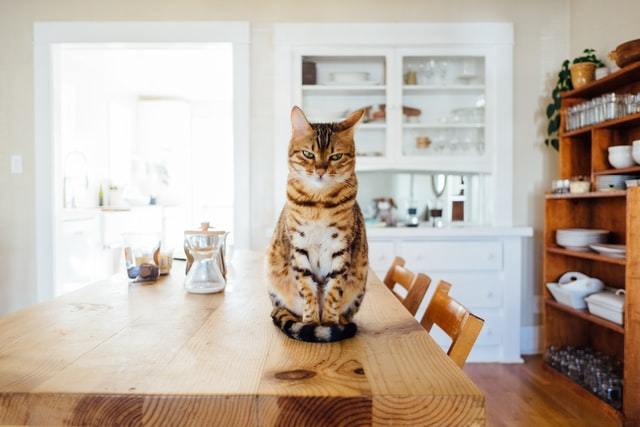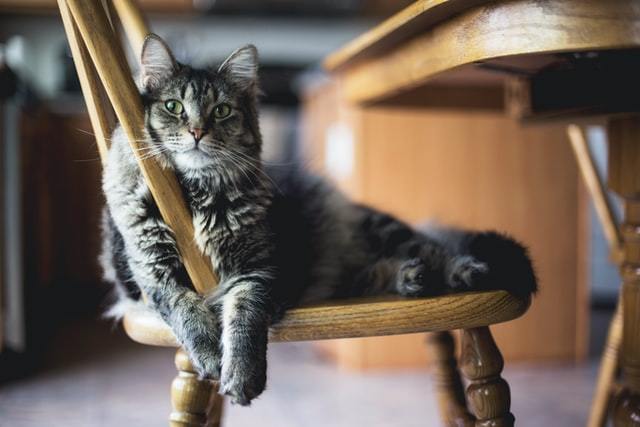Article at a glance
Feline periodontal disease is a common issue experienced by adult cats. They can experience a range of signs including a loss of appetite and bad breath. For most, treatment will consist of a dental cleaning performed by a vet:
- Over half of cats will be affected by dental disease at any one time
- Signs are not always obvious and affected cats may mask their symptoms
- Factors like genetics, diet and lifestyle all play a role
Few of us spend time intimately inspecting the inside of our cat’s mouths. In fact, it wouldn’t be unusual for an owner to have never looked inside their cat’s mouth. In general, cats dislike having people anywhere near their mouth. This is especially the case if they have any underlying dental disease.
Those with periodontal disease may have plaque and calculus build up, gingivitis (gum inflammation), loose or rotten teeth, ulcers and even oral abscesses. More specifically, cats can suffer from lesions such as ‘oral resorptive lesions’, whereby the tooth is eroded. Periodontal disease in cats will worsen with time. It is important we diagnose and treat it early on to prevent suffering and chronic infections.
According to Cornell University, between 50% and 90% of cats suffer from some degree of dental disease.
How Is Feline Periodontal Disease caused?
Feline periodontal disease is not always a straightforward condition. There are many potential causes. Factors that can be implicated and which need to be considered include:
- Diet
- Genetics
- Lack of dental hygiene (tooth brushing, plaque removal products)
- Shape of the jaw and teeth
- Infections and/or autoimmune disease
The typical course of the disease is as follows:
Food sits on the tooth and bacteria forms a plaque film. This tartar forms a thick layer of calculus which may be yellow or brown. This leads to gum inflammation and irritation, resulting in gums that may be swollen and bleed. The connection between the tooth and gum is eroded and teeth become loose.

What are the Symptoms?
The symptoms of dental disease are not always obvious as cats are experts at keeping themselves to themselves and not making a fuss. Many will suffer in silence for months or even years before the pain gets too much and they decline their meals or hide away. The most common signs are:
- Bad Breath
- Red gums that may or may not bleed
- Visible calculus build up on the surface of the tooth
- Drooling
- Preference for wet or soft foods
- Difficulty eating, especially kibble
- Pawing at the mouth
What are the Stages?
Not all cases of dental disease follow the same pattern, though most will progress predictably.
For most, dental disease starts with mild gingivitis and invisible plaque build-up. Over time, the gingivitis worsens and there is visible calculus and other signs such as halitosis (bad breath). The supporting structures of the teeth gradually fail over time, leading to loose teeth.
Most vets will grade feline gum disease from a one to a three (or mild, moderate, severe). Severe gingivitis is most often associated with advanced dental disease and the need for dental extractions. Those with severe gingivitis usually have the most pronounced symptoms and have been suffering for the longest.
Diagnosis
Diagnosing dental disease is something that must be done by a veterinary professional. It is very difficult for someone who is inexperienced to accurately assess oral health. Many owners will miss the early signs of dental disease.
Usually, periodontal disease is diagnosed by taking a close look at the mouth. For most, we can thoroughly examine their mouth while they are awake on the consulting table. Rarely, this is done under sedation or anaesthetic if a cat is very uncooperative.
Further testing such as dental x-rays and viral swabs may sometimes be advised. This is especially the case if the vet is concerned there may be more going on than meets the eye. Similarly, we may run some blood tests if concerned about e.g. FIV or FeLV infection. This study demonstrates the important link between FIV and gum disease.
What is the Best Treatment for Periodontal Disease?
Which treatment is needed is dependent on the extent of the dental disease and presence of e.g. abscesses or ulcers. The majority of the time, the mainstay of treatment will be dental cleaning under an aesthetic.
A vet will scale and polish all of the teeth and assess for any gingival pocketing (a gap between the gum and tooth). Any diseased teeth will be extracted and the vet will ensure that all roots are removed.

Most patients will require medication including anti-inflammatories and pain relief. Some will also need antibiotics.
Can Periodontal Disease in Cats be Prevented?
While we cannot always prevent dental disease, especially in those with a strong genetic predisposition towards developing it, there are steps that can be taken.
Feed a hard kibble rather than a wet food diet. A prescription dental diet such as Hill’s T/D can be especially beneficial. These diets are abrasive and prevent food accumulation on the surface of the teeth, discouraging plaque formation
Get your kitten used to having their teeth brushed each day and continue this on during their adult life. Realistically, it is much harder to teach an adult cat to accept this. Most owners cannot brush their cat’s teeth. If your cat does tolerate tooth brushing, reward them with lots of praise after and keep sessions short. Tooth brushing is painful when gums are inflamed so we should wait to start a new brushing regime a few weeks after a dental cleaning. This article is a great read when it comes to feline tooth brushing.
Have your cat’s teeth regularly checked by their vet and do not delay any suggested dental cleanings. Most cats, even those who aren’t especially prone to dental disease, will need a couple of dental cleanings during their lifetime.
Keep your cat in good health by ensuring they are up to date with their vaccines. Keep them away from cats who are unwell and may be viral carriers.
The Take Home Message
Cat periodontal disease is a common ailment that affects most of our pet kitties. There are a range of signs that owners should be on the lookout for. There are several ways we can reduce the likelihood of our pets developing feline gum disease. We should start with these interventions early in their life.
References
https://www.vet.cornell.edu/departments-centers-and-institutes/cornell-feline-health-center/health-information/feline-health-topics/feline-dental-disease
https://www.cabdirect.org/cabdirect/abstract/20103299097
https://scruffypawsnutrition.com/blogs/dental-health/brush-cats-teeth
Dr. Linda Simon, BVMS, MRCVS
Veterinary surgeon,Dr. Linda Simon MVB MRCVS is a locum veterinary surgeon who has worked in London for the past 8 years. She graduated top of her class in small animal medicine from UCD, Dublin. She is currently a member of the Royal College of Veterinary Surgeons.



